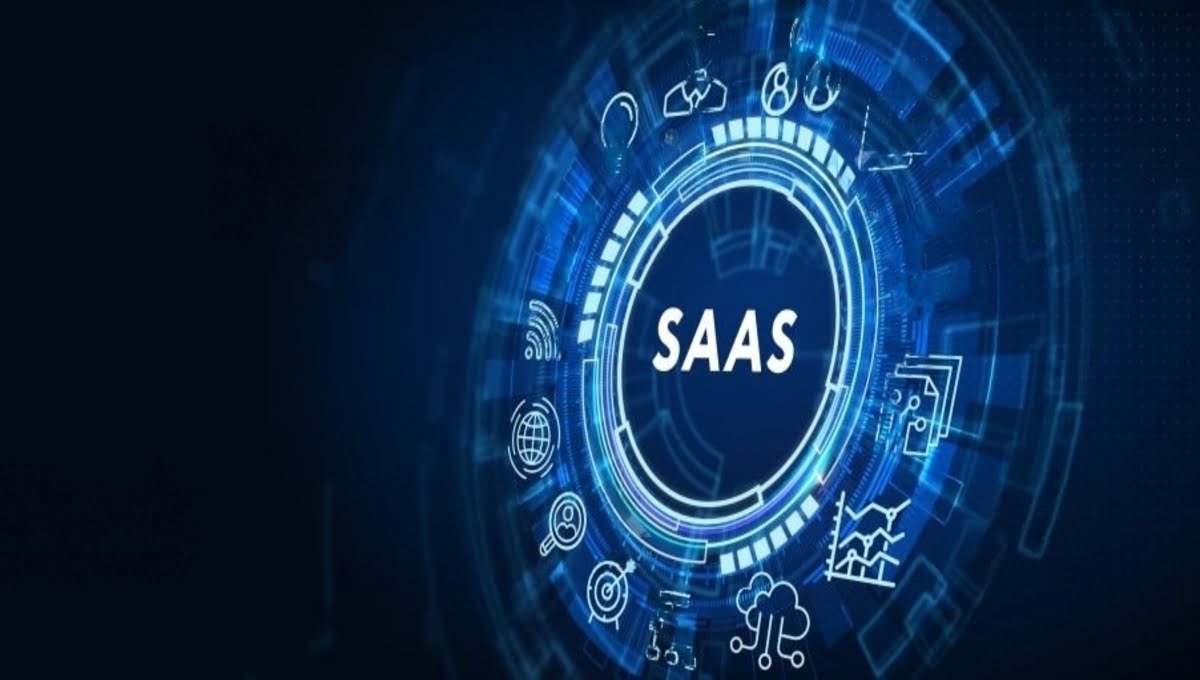CLOUD COMPUTING
Exploring the Relationship Between SaaS and Cloud Computing

Introduction
In today’s fast-paced digital landscape, where technology is evolving at a rapid pace, concepts like SaaS (Software as a Service) and cloud computing have become integral components of businesses’ success strategies. This article aims to elucidate the profound relationship between SaaS and cloud computing, shedding light on the benefits and intricacies they offer. Let’s embark on a journey to understand how these two concepts intertwine and explore some of the most popular examples of SaaS applications that have transformed industries.
Understanding Cloud Computing and SaaS
What is Cloud Computing?
Cloud computing involves delivering a variety of computing services, including storage, processing power, databases, networking, and more, over the internet. It eliminates the need for organizations to maintain physical hardware, allowing them to scale resources up or down based on demand.
What is SaaS?
SaaS, on the other hand, refers to the delivery of software applications via the cloud. Users can access these applications through web browsers, eliminating the need for installation on individual devices. This model offers convenience, automatic updates, and flexibility.
The Connection Between SaaS and Cloud Computing
Shared Infrastructure
Both SaaS and cloud computing share the concept of a shared infrastructure. Multiple users and businesses utilize the same underlying resources, making efficient use of hardware and reducing costs.
Scalability and Flexibility
Cloud computing’s scalability seamlessly aligns with SaaS applications. Organizations can upscale or downscale their software usage according to business requirements, ensuring optimal resource utilization.
Benefits of SaaS in Cloud Computing
Software as a Service (SaaS) is a cloud computing delivery model in which software is licensed on a subscription basis and is centrally hosted by the software vendor. SaaS applications are typically accessed over the internet using a web browser or mobile app.
There are many benefits to using SaaS in cloud computing, including:
- Cost-effectiveness: SaaS can be a very cost-effective way to deploy and manage software. There are no upfront hardware or software costs, and businesses only pay for the resources they use. This can be especially beneficial for small businesses or startups that may not have the budget to invest in on-premises software solutions.
- Scalability and accessibility: SaaS applications are highly scalable and accessible. Businesses can easily add or remove users and resources as needed, and users can access the application from anywhere with an internet connection. This makes SaaS ideal for businesses that experience seasonal fluctuations in demand or that have a remote workforce.
- Ease of use: SaaS applications are typically very easy to use and require minimal training. This is because the SaaS vendor is responsible for hosting and maintaining the application, so businesses do not need to invest in their own IT infrastructure.
- Security: SaaS vendors typically invest heavily in security measures to protect their applications and customer data. This can be a major advantage for businesses that may not have the resources to implement their own security solutions.
- Automatic updates: SaaS vendors typically release automatic updates to their applications on a regular basis. This ensures that businesses are always using the latest version of the software with the most up-to-date security features.
Here are some examples of popular SaaS applications:
- Customer relationship management (CRM): Salesforce, HubSpot, and Zoho CRM
- Email marketing: Mailchimp, Constant Contact, Active Campaign
- Enterprise resource planning (ERP): NetSuite, SAP Business One, Oracle ERP Cloud
- Human capital management (HCM): Workday, ADP Workforce Now, and Oracle HCM Cloud
- Office productivity: Microsoft 365, Google Workspace
Popular Examples of SaaS Applications
Salesforce
Salesforce revolutionized customer relationship management (CRM) with its cloud-based SaaS platform, empowering businesses to manage leads, opportunities, and customer interactions efficiently.
Microsoft 365
Formerly known as Office 365, Microsoft 365 offers a suite of productivity applications delivered through the cloud, including Word, Excel, Outlook, and Teams.
Google Workspace
Formerly G Suite, Google Workspace provides collaborative tools like Docs, Sheets, and Drive, enhancing team productivity and real-time collaboration.
SaaS in Specific Industries
SaaS is becoming increasingly popular in a wide range of industries. Here are some examples of how SaaS is being used in specific industries:
- Healthcare: SaaS applications are used in the healthcare industry to manage patient records, electronic health records (EHRs), billing and insurance, and telemedicine.
- Financial services: SaaS applications are used in the financial services industry to manage customer accounts, loan processing, fraud detection, and investment trading.
- Retail: SaaS applications are used in the retail industry to manage inventory, e-commerce platforms, customer loyalty programs, and point-of-sale (POS) systems.
- Manufacturing: SaaS applications are used in the manufacturing industry to manage production planning, quality control, supply chain management, and customer relationship management (CRM).
- Education: SaaS applications are used in the education industry to manage student records, online learning platforms, and communication between teachers and parents.
SaaS is also being used in a number of other industries, such as construction, hospitality, and transportation.
Here are some examples of popular SaaS applications in specific industries:
- Healthcare: Epic, Cerner, Athena health
- Financial services: Salesforce Financial Services Cloud, Oracle Financial Services Cloud, SAP Financial Services Cloud
- Retail: Shopify, Magento, and Salesforce Commerce Cloud
- Manufacturing: Infor Cloud Suite Industrial, Oracle ERP Cloud for Industrial, SAP S/4HANA Cloud for Manufacturing
- Education: Blackboard Learn, Canvas, Moodle
SaaS offers a number of benefits for businesses in all industries. It is a cost-effective, scalable, and easy-to-use way to deploy and manage software. SaaS applications are also typically very secure and are automatically updated with the latest features.
The rise of SaaS is transforming the way that businesses operate. By providing businesses with access to powerful software applications on a subscription basis, SaaS is making it easier and more affordable for businesses to innovate and grow.
Conclusion
SaaS, as a subset of cloud computing, has revolutionized the software industry by offering accessibility, flexibility, and cost savings. As technology continues to evolve, businesses must embrace the power of SaaS to stay competitive and agile in a digital world.
Frequently Asked Questions (FAQs)
SaaS applications are hosted in the cloud and accessed through browsers, while traditional software requires installation on local devices.
Yes, many SaaS applications offer customization options to align with specific business requirements.
Data security is a shared responsibility between the SaaS provider and the user. Implementing security best practices can minimize vulnerabilities.
SaaS applications provide real-time collaboration tools, enabling remote teams to work together seamlessly on projects and documents.
SaaS will facilitate data processing and analysis for the massive influx of data generated by IoT devices, enabling meaningful insights and actions.

 FUNDAMENTAL1 year ago
FUNDAMENTAL1 year agoHow Cloud Computing Improving Customer Service Processes

 FUNDAMENTAL4 months ago
FUNDAMENTAL4 months agoWhat is cloud computing? A Comprehensive Guide

 CLOUD COMPUTING4 weeks ago
CLOUD COMPUTING4 weeks agoWhat Is Vlan and VSAN In Cloud Computing?

 FUNDAMENTAL2 weeks ago
FUNDAMENTAL2 weeks agoHow can Cloud Technology Help Small Businesses ?

 FUNDAMENTAL4 months ago
FUNDAMENTAL4 months agoEvolution of Cloud Computing : A Well-Explained

 CLOUD COMPUTING3 weeks ago
CLOUD COMPUTING3 weeks agocloud bursting in cloud computing

 FUNDAMENTAL3 weeks ago
FUNDAMENTAL3 weeks agoIaaS PaaS and SaaS in cloud computing

 CLOUD COMPUTING3 weeks ago
CLOUD COMPUTING3 weeks agoDistributed computing in cloud computing?










